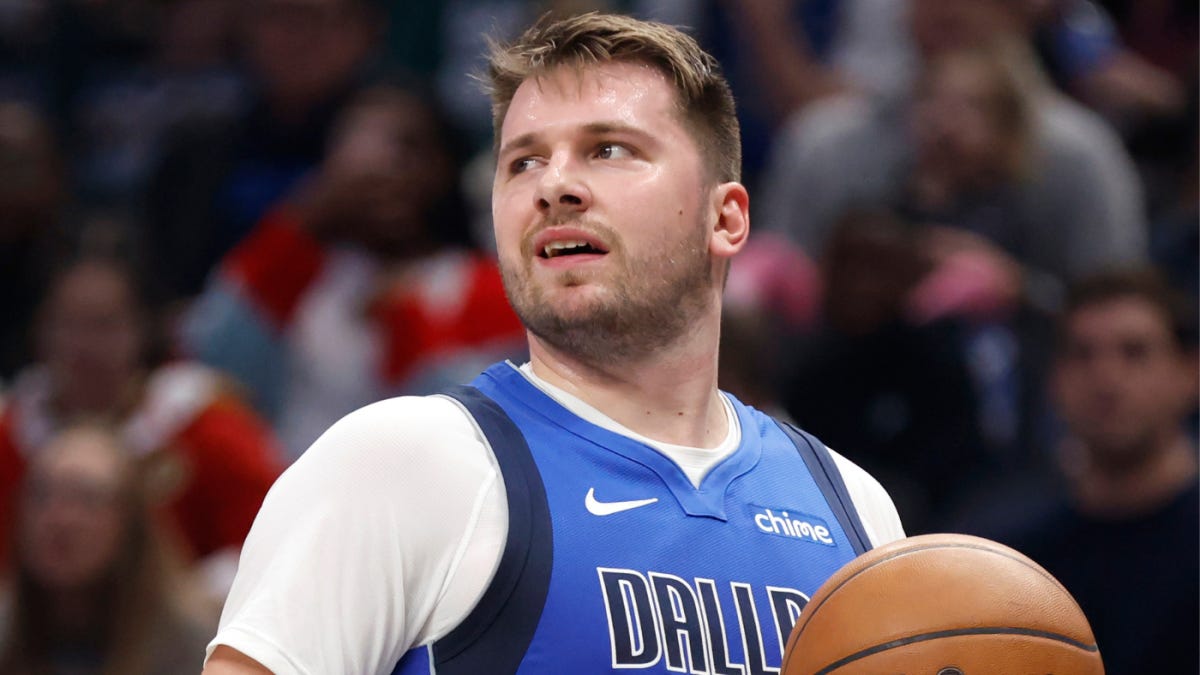The Dallas Mavericks traded Luka Doncic to the Los Angeles Lakers for Anthony Davis on Saturday night in a rim-shaking blockbuster deal, opting out of Doncic’s present and near future in possibly the most surprising trade in NBA history.
The Mavericks had increasingly soured on Doncic, one of the top five players in the game, in recent seasons because of his conditioning, diet and general approach to the game. Doncic has played only 22 of 50 games this season, primarily because of a left calf strain. He has suffered four such strains in two years, and the Mavericks front office has felt more frustration than empathy.
Doncic finished third in MVP voting and led the Mavericks to the NBA Finals last season, losing to the Boston Celtics in four games. But it was his Game 3 meltdown that stuck with the Mavericks and others.
ESPN’s Brian Windhorst eviscerated Doncic on television and in print: “Completely unacceptable. No one can tell Doncic anything. Not teammates, not coaches, not executives, not media, not fans, not referees. There have been a lot of pleas and promises that he'll improve, but this one is going to leave a mark.” One takeaway: The Mavericks organization didn’t challenge Windhorst’s assertions — neither privately or perfunctorily.
But players like Luka Doncic are not traded, particularly if they haven’t asked for a move. The closest comparison is Bob McAdoo, who was 25 with two MVP awards when he was traded from Buffalo to New York in 1976.
This trade marked the first time that two reigning All-NBA players were traded for each other in midseason.
The Mavericks improved in the moment, because Davis (25.7 points, 11.9 rebounds) is having an All-NBA season and Doncic is not. Dallas could field a lineup of Davis, Kyrie Irving, Klay Thompson, Daniel Gafford, and Naji Marshall and present a height challenge for the Oklahoma City Thunder.
The Lakers are better in the long run, because they acquired Doncic, a superstar not yet in his prime. He will join LeBron James, who is 15 years his senior. They both fill up the boxscore but struggle on defense.
As for Doncic’s mid- to long-term future, Mavericks general manager Nico Harrison doesn’t much care: “The future to me is three, four years from now. The future 10 years from now, I don’t know. They’ll probably bury me and (coach Jason Kidd) by then. Or we’ll bury ourselves.”
One of the lasting visuals from last season was Mavericks assistant general manager Michael Finley taking a beer away from Doncic after winning the conference finals.
On Saturday, the Mavericks said: Hold my beer.
TEAMS >> Rankings
1. Oklahoma City Thunder (1, last week)
2. Cleveland Cavaliers (4)
3. Boston Celtics (5)
Game of the week >> Mavericks at Celtics, Thursday at 7:304. Memphis Grizzlies (2)
5. Los Angeles Lakers (8)
28-19 (.596) before the trade. They will have a tough time matching that.6. New York Knicks (6)
7. Houston Rockets (3)
8. Indiana Pacers (10)
9. Denver Nuggets (7)
10. Los Angeles Clippers (—)
ALL-STAR TEAM >> The Trade Show
Call it Lakers exceptionalism. Or unfair. Either way, great players gravitate to Los Angeles. Kareem Abdul-Jabbar, Wilt Chamberlain, Shaquille O’Neal, Pau Gasol, LeBron James, and Anthony Davis were acquired in their prime or close to it. Karl Malone, Gary Payton, Steve Nash, and Dwight Howard were part of super team experiments. Here are the best first seasons by new Lakers players.
starters (season) pts reb ast shooting TS%
F LeBron James, 2019 27.4 8.5 8.3 58-34-67 58.8
F Anthony Davis, 2020 26.1 9.3 3.2 55-33-85 61.0
C Kareem Abdul-Jabbar, 1976 27.7 16.9 5.0 53----70 56.7
G Gary Payton, 2004 14.6 4.2 5.5 50----71 52.8
G Steve Nash, 2013 12.7 2.8 6.7 52----92 60.5
bench (season) pts reb ast shooting TS%
C Wilt Chamberlain, 1969 20.5 21.1 4.5 58----45 56.4
C Shaquille O'Neal, 1997 26.2 12.5 3.1 56----48 55.6
C Pau Gasol, 2009 18.9 9.6 3.5 57----78 61.7
C Dwight Howard, 2013 17.1 12.4 1.4 58----49 57.3
F Cedric Ceballos, 1995 21.7 8.0 1.8 53-40-72 57.0
G Sedale Threatt, 1992 15.1 3.1 7.2 50----83 54.0



